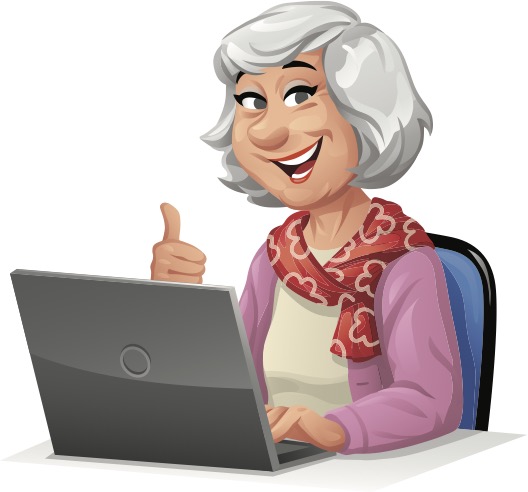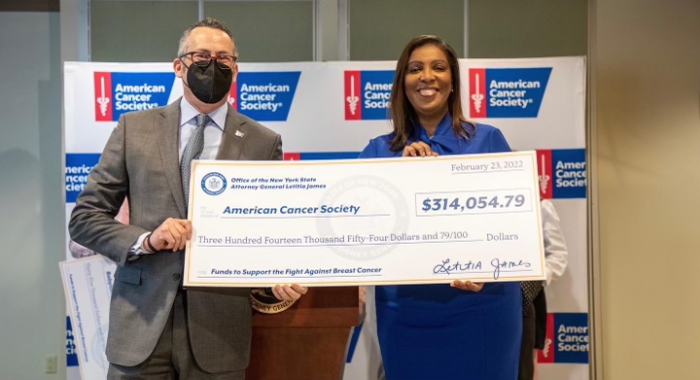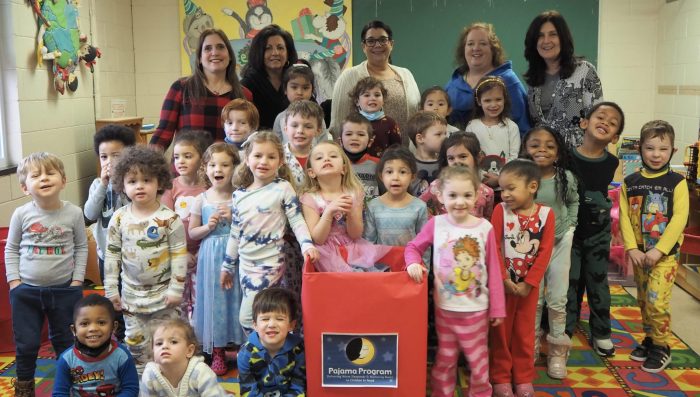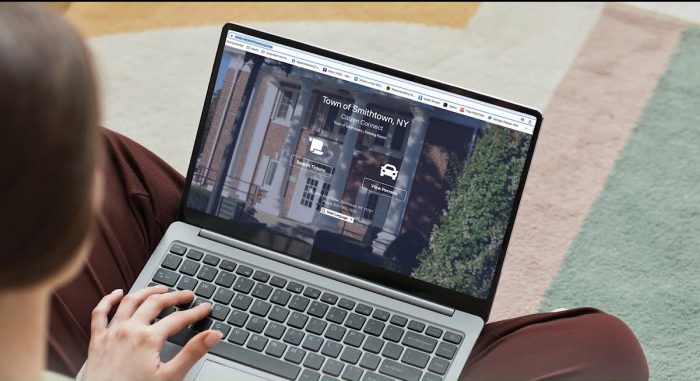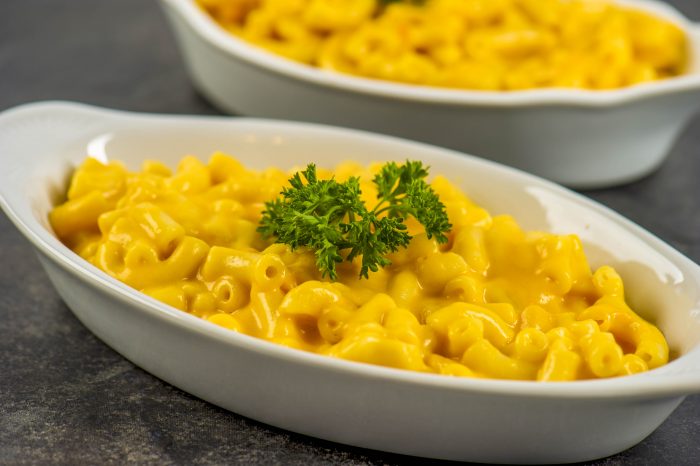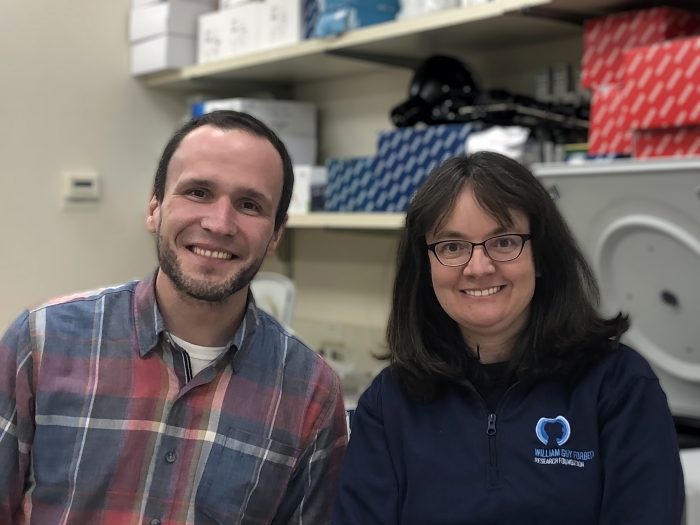Get ready to lose an hour of sleep, but gain an extra hour of daylight! Daylight Saving Time begins at 2 a.m. on Sunday, March 13. That’s when you’ll move your clocks forward by one hour and “spring ahead.” The event is also a good time to change the batteries in your smoke and carbon monoxide detectors. Daylight Saving Time ends on Nov. 6 this year.
Art League of Long Island announces winners in Part One of the 65th annual Members’ Exhibition
After a one-year hiatus due to the COVID pandemic, the Art League of Long Island is proud to be hosting its 65th annual Members’ Exhibition in Jeanie Tengelsen Gallery. In the first part of the Art League of Long Island’s Members’ Exhibition, Juror Mary Cantone has selected six artists to receive awards of excellence and honorable mentions. Part One of the exhibit features 58 works of art and is on view in the Art League’s Jeanie Tengelsen Gallery through March 11. Part Two will be on view March 19 through April 8, with Ms. Cantone continuing her role as exhibition juror.
Awards of Excellence: Diana Aliberti, “Apples and Pomegranates”, Watercolor; Andrea M. Gordon, “Orchid Couple”, Digital Photograph; Lucy Brown Karwoski, “Into Another Galaxy”, Intaglio Print
Honorable Mentions: Caryn Coville, “Fairy Rose”, Colored Pencil on Pastel Mat; Rachel Dove, “Haven Pit Fired Stoneware”, Cotton Cord, Dyed Raffia Palm; Gia Horton, “Reflections in Blue”, Oil Paint
About the Juror:
Mary Cantone recently opened the William Ris East Gallery in Jamesport, New York on Long Island’s North Shore to continue the traditions of the William Ris Gallery, whose roots began in Pennsylvania in 1966 when Barbara Starr Schreckengaust and William Ris Schreckengaust founded the gallery. Today, the gallery is owned by Mary Cantone, the beloved daughter of Barbara and sister of Bill. Mary’s career in designing interiors and space planning has included collaborating with artists and encouraging clients to enhance, with passion, the fine arts. A bonus to Cantone’s innate and nurtured abilities is her keen sensibilities for mixing mediums, styles and colors. The gallery’s stable of artists, while still growing, has a dedicated following that is renowned and recognized nationally.
The Art League of Long Island is located at 107 East Deer Park Road in Dix Hills. The gallery is open to the public, free of charge. Artwork on display may also be available for purchase! For more information about the Art League gallery hours visit www.artleagueli.org
###
Smithtown Historical Society hosts Technology Savvy Seniors program
Stay connected! The Smithtown Historical Society hosts a Technology Savvy Seniors program at the Brush Barn, 211 E. Main St., Smithtown every other Friday including March 11 and 25 at 10 a.m. This free technology workshop is geared to help seniors with their cell phones, tablets, laptops and more. Topic will vary at each session. Call 631-265-6768 for further details.
Attorney General James delivers over $640,000 to New York breast cancer organizations
New York Attorney General Letitia James today delivered more than $640,000 to five nonprofit organizations that are leading the fight against breast cancer. The funds were recovered by the Office of the Attorney General (OAG) from organizations and individuals who defrauded New Yorkers into making donations that went into the pockets of telemarketers.
The OAG recovered the funds from the Breast Cancer Survivors Foundation, Inc. (BCSF), a sham organization, and Garrett Morgan, a telemarketer who misled donors into contributing to a sham breast cancer organization on Long Island. The $644,054.79 in restitution was distributed to the American Cancer Society, Living Beyond Breast Cancer, West Islip Breast Cancer Coalition, Babylon Breast Cancer Coalition, and Manhasset Women’s Coalition Against Breast Cancer.
“It is unconscionable that organizations and telemarketers preyed on the public’s generosity and deprived breast cancer patients of vital support during a time of tremendous physical, mental, and emotional distress,” said Attorney General James. “Today, I am honored to return these funds to the people and organizations that need them most. My office is proud to be a partner to these five incredible organizations and help them in supporting breast cancer patients and survivors throughout their journey.”
In 2017, OAG announced an agreement with BCSF and its president and founder. The BCSF posed in phone and mail solicitations as a medical center for breast cancer patients, when in reality it was a shell organization funneling donations to an outside fundraiser, which pocketed 92 cents of every dollar donated to BCSF. The OAG’s agreement required BCSF to shut down immediately and pay more than $300,000 in restitution, the last of which was received by OAG in 2021. The OAG also obtained $40,000 from BCSF’s auditors, McEnerney, Brady & Company LLC and Edmund Brady.
In 2013, OAG won a judgment against Garrett Morgan for fraud in raising funds for the Coalition Against Breast Cancer, a sham Long Island organization. The organization raised millions of dollars with solicitations that claimed there was a “mammography fund,” when there was none, and that donations would provide free mammograms to uninsured women. Morgan did not pay the judgment and, acting on a motion by OAG, the court appointed a receiver to collect or sell Morgan’s property to satisfy the judgment. In 2021, the receiver delivered $303,747.86 to OAG.
The OAG’s Charities Bureau selected five nonprofit organizations to receive the restitution funds, including:
The American Cancer Society ($314,054.79): The American Cancer Society will use the award to support an initiative that increases breast cancer screening in high poverty areas, including screening among women who have never been screened before or who are not up to date with screening. The initiative focuses on uninsured and underinsured women by partnering with community health centers. With funds from OAG, the American Cancer Society will launch a new cohort of community health centers to participate in the mammogram initiative.
“The American Cancer Society is committed to expanding access to care for all and removing barriers that prevent cancer patients from getting the care and treatment they need,” said Dr. Karen Knudsen, CEO, American Cancer Society. “The pandemic brought about dramatic declines in breast cancer screenings. We are grateful that funds from the New York Attorney General’s Office will expand our lifesaving initiative to increase cancer screening rates and ultimately save lives.”
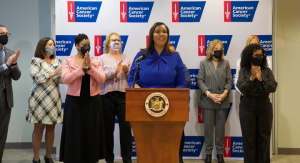
Living Beyond Breast Cancer ($225,000): Living Beyond Breast Cancer, a national nonprofit organization, will use the award to support its Living Beyond Breast Cancer Fund, which provides one-time grants to help those on limited incomes manage the financial burden of breast cancer. Grants range from $500 to $1,000 and are for living expenses. Grants are paid directly to vendors or billers. Recipients of the one-time grants must be in active treatment for breast cancer or living with metastatic breast cancer, and have a household income under 400 percent of the U.S. federal poverty line.
“We are honored to have been selected by the New York Attorney General’s Office,” said Jean Sachs, CEO, Living Beyond Breast Cancer. “Living Beyond Breast Cancer was founded over 30 years ago to offer trusted information and a community of support for all people directly impacted by breast cancer. We annually serve over 600,000 people across the country. A critical program of ours is the Living Beyond Breast Cancer Fund, a financial assistance program that pays the bills for women in treatment for basic needs such as rent, utilities, and transportation. Since 2006, we have been able to disburse over 3,150 grants for an approximate total of $2,530,000 to women and their families. Since the pandemic began, we have doubled the number of grants available to give to recipients as a way to alleviate financial hardship faced by so many across the country. The funds provided by the New York Attorney General’s Office will allow us to continue this intensive support, and help women in treatment focus on their health and not on their bills.”
West Islip Breast Cancer Coalition on Long Island ($30,000): West Islip Breast Cancer Coalition of Long Island, Inc., will use the award to provide patients undergoing breast cancer treatment with services such as transportation, meals, childcare, house cleaning, wigs, advice, and support from former cancer patients.
“The West Islip Breast Cancer Coalition for Long Island, Inc. is extremely grateful to the Attorney General’s Office and its commitment to overseeing that funds raised to help women with breast cancer go to legitimate organizations that provide services to the many women on Long Island going through chemotherapy and radiation,” said Margaret Campise, president, West Islip Breast Cancer Coalition. “This award will ensure that many Long Island women will be taken care of through our ‘Lend A Helping Hand’ program, which offers free services like house cleaning, transportation to treatments, co-payments, wigs, prosthesis, and post-operative care. On behalf of the many women going through breast cancer, and the West Islip Breast Cancer Coalition for Long Island, I want to thank the Attorney General’s Office.”
Babylon Breast Cancer Coalition ($35,000): Babylon Breast Cancer Coalition, Inc., will use the award to provide an array of services to patients undergoing treatment for breast cancer and gynecological cancers, including transportation to medical appointments, housekeeping, meals, and childcare as needed during treatment.
“About 1 in 8 U.S. women (13 percent) will develop invasive breast cancer over the course of a lifetime and when that happens a woman’s life, and the lives of those who love her, are thrown into turmoil as she undergoes a horrific treatment ordeal,” said Nick Radesca, volunteer & vice president of finance, Babylon Breast Cancer Coalition. “Because most people’s lives have been impacted by this disease, many willingly donate to breast cancer charities. I want to thank the New York State Attorney General’s Office for bringing unscrupulous individuals to justice and redistributing defrauded donors’ funds to legitimate organizations. Babylon Breast Cancer Coalition, Inc. will use its share to provide free support services such as transportation to and from medical appointments, housecleaning, financial assistance, childcare, meal preparation, and other needed services.”
Manhasset Women’s Coalition Against Breast Cancer ($40,000): Manhasset Women’s Coalition Against Breast Cancer, Inc., will use the award to support its outreach program, which provides services to patients in the form of transportation, childcare, house cleaning, wigs, and non-financial support including advice and general emotional support of other former patients.
“The Manhasset Women’s Coalition Against Breast Cancer congratulates the Office of the New York Attorney General’s Charities Bureau for their efforts in pursuing the shutdown of the Coalition Against Breast Cancer and the Breast Cancer Survivor’s Foundation, both fraudulent organizations,” said Lynn Minutillo, member of board of directors, Manhasset Women’s Coalition Against Breast Cancer. “The MWCABC is so very grateful to be designated as a recipient of funds secured in the settlements of these cases. The women with breast cancer with whom we engage will be better served financially, emotionally, and educationally. Be assured we will strive to be conscientious stewards of the funds entrusted to us.”
The recovered funds distributed today are part of OAG’s Operation Bottomfeeder, which is an initiative of the Charities Bureau to identify fraudulent charities and their fundraisers. This is done through an analysis of annual financial reports, fundraising contracts, and other documents that nonprofit corporations file with the Charities Bureau, and has allowed OAG to take appropriate enforcement action against those engaging in fraud. In 2020, as a part of Operation Bottomfeeder, Attorney General James announced a multi-agency agreement imposing a nationwide, permanent, ban on Outreach Calling, a for-profit fundraiser, from charitable fundraising. To date, Operation Bottomfeeder has recovered approximately $1.7 million from sham charities and their fundraisers and has redistributed that money to legitimate charities.
This matter was handled by Enforcement Section Co-Chief Yael Fuchs and Assistant Attorneys General Peggy Farber, William Wang, and Sharon Sash under the supervision of Charities Bureau Chief James Sheehan and Deputy Bureau Chief Karin Kunstler-Goldman. The Charities Bureau is a part of the Division for Social Justice, which is led by Chief Deputy Attorney General Meghan Faux and overseen by First Deputy Attorney General Jennifer Levy.
Greenlawn nursery school donates pajamas to children in need
Humpty Dumpty Nursery School of Greenlawn recently took part in their 14th annual Pajama Program a not for profit organization that provides pajamas for children in need in the United States and around the world. All the children took part and collected over 75 pairs of pajamas. This truly was a valuable experience as the children learned the importance of helping others. The children all attended a pajama party celebrating their accomplishments. Pictures from left with the children are Miss Ginnie, Miss Carmel, Miss Melissa, Miss Jean and Miss Barbara .
Town of Smithtown residents can now renew parking permit online
Town of Smithtown residents can now renew or obtain parking permits (vehicle window sticker) from the comfort of home. The permit allows residents to park registered vehicles at Town parks, beaches and public facilities within the township. The Town Clerk’s office, in conjunction with Public Safety, has launched Citizen Connect, an online web portal for residents to request the parking permit, without the hassle of making a trip to Town Hall. To register, log on to www.tocite.net/smithtownny/
The physical permit is in the form of a sticker, and allows residents access to Smithtown’s parks, beaches and recreation facilities. The new permit is effective from April 1st, 2022 through March 31st, 2024.
“This is just one example of how Smithtown is modernizing services and providing ease of access to its residents every day. Now, community members have the option of registering to get their Town sticker online with a quick five minute process. And anyone who is accustomed to, or prefers to do so in person, can still walk into Town Hall to get their new permit. I commend our Town Clerk, his team and the Department of Public Safety for orchestrating this new and efficient process,” said Supervisor Ed Wehrheim.
Registering online for a Smithtown parking permit is a fast and convenient process. Residents simply log on to www.tocite.net/smithtownny/
Note: Residents should confirm that vehicle registration is current and issued to a Town of Smithtown address, or additional proof of residency will be required to be uploaded. Once the online submittal is completed, and the request for a parking permit is approved by the Town Clerk’s office, residents will be sent the new 2022-2024 parking permit through the mail. The parking permit should be placed on the OUTSIDE of the driver’s side passenger window.
“We have been working with Citizen Connect for months to create an easy, accessible web portal for our residents to use to request their resident parking permit. We listened to our residents’ concerns and have changed the design of the permit. The new permit will now adhere to the outside of the vehicle’s window to avoid any contact with the interior for those who have tinted windows. Also, our town is no longer listed on the permit, so it keeps the place of residency private. We are excited for these changes and for the new permit to go in effect,” added Town Clerk Vincent Puleo.
How to Register Online for the Town of Smithtown’s Resident Parking Permit:
For the first time in Smithtown history, resident parking permits can now be requested online. Below are the steps on how to register to Citizen Connect to request the permit.
-
Visit Online https://www.tocite.net/
smithtownny/portal – Type the URL into your address bar or scan the QR code to access the website. -
Create an account – Click “Login” located at the upper right hand corner of the screen. The sign-in page will open. Click “Create Account” underneath where it says “New to Citizen Connect?” Fill in the required fields (name, email, & password).
-
Activate your account by confirming the email – Once you’ve created an account, you must check your inbox for an “Email Confirmation.” Click the link in the email to activate your account.
-
Add vehicle and address information – After your account is activated and you’re logged in to Citizen Connect, click “View Permits” and then click the “Register” button. Fill in the information under the field “Address 1.” Then click “Add Vehicle to Permit” and fill in your vehicle’s information listed on its registration.
-
Upload your vehicle registration – Take a photo of your vehicle registration, and upload it to the website for proof of residency and to be in accordance with the law.
-
Register for permit – Once all of the required information has been submitted, at the bottom, read the disclaimer and click the box next to it. Click “Register For Permit.”
-
Check the Mail – After you have successfully registered and the Town Clerk’s office approves your request, your resident parking permit will be sent to you via mail.
DID YOU KNOW: The Town Clerk’s office is often considered the record keeper of the Town. It is the office responsible for recording vital records, and the distribution of various permits and licenses. Located inside of Smithtown Town Hall, the Town Clerk’s office is open to the public Monday-Friday, 9:00AM-5:00PM (4:00PM in July and August). For more information and updates about the Town Clerk’s office and services, follow on Facebook and Instagram: @SmithtownTownClerksOffice.
Vanderbilt Museum kicks off Thankful Thursdays series March 10
The Suffolk County Vanderbilt Museum, 180 Little Neck Road, Centerport will kick off the first of a series of Thankful Thursdays on March 10 at 7 p.m. in the Reichert Planetarium. Funding is generously provided by BAE Systems.
The evenings will feature a family-friendly planetarium show. After the show, astronomy educators will invite visitors to look through telescopes at the night sky – weather permitting.
The featured show on March 10 is Stars: The Powerhouses of the Universe. This intriguing show takes the audience on a journey to the farthest reaches of the galaxy to experience both the awesome beauty and destructive power of stars. Narrated by actor Mark Hamill of Star Wars.
The event is free, but registration is required.
Cooking Cove: Mac and Cheese — A great American favorite
By Barbara Beltrami
My mother never made macaroni and cheese so when I was a kid it was Franco-American straight out of the can. In my young adulthood I made macaroni and cheese for my kids from the Kraft package which included the elbow macaroni and a little packet of powdery grated American cheese to which, if I remember correctly, I added milk and butter.
Now that the kids are all grown up and I need the calories and cholesterol from macaroni and cheese like a hole in the head, I’ve suddenly awakened to real mac and cheese (during the Covid incarceration, of course). It was lobster mac and cheese that did it. And then the other day my friend suggested a mac and cheese column. So here it is and to hell with the calories and the cholesterol!
Classic Macaroni and Cheese
YIELD: Makes 4 to 6 servings
INGREDIENTS:
1 pound curly macaroni
Salt to taste
1 tablespoon oil
1/4 cup unsalted butter
1/4 cup flour
4 cups milk
Freshly ground pepper to taste
3/4 pound freshly grated sharp white cheddar cheese
3/4 pound freshly grated fontina cheese
1 teaspoon cayenne
DIRECTIONS:
Cook macaroni in a large pot of boiling salted water until just barely al dente. Drain, toss with oil and set aside. Preheat oven to 425 F. In a medium pot, heat butter over medium heat; whisk in flour, and continuing to whisk constantly, cook until flour starts to foam and turn golden, 3 to 5 minutes. Gradually whisk in milk, then salt and pepper and still whisking, bring to a simmer. Add grated cheese, whisk until completely melted, add cayenne and cooked pasta and stir well. Transfer mixture to a 9 x 13” baking dish, place on baking sheet to catch any drippings and bake until top starts to crisp and sides are bubbly, about 20 to 30 minutes. Serve hot with a tossed salad.
Four Cheese Mac and Cheese
YIELD: Makes 6 to 8 servings
INGREDIENTS:
1 1/2 tablespoons unsalted butter
1 pound curly macaroni
6 ounces Robiola, rind removed, cheese diced
4 ounces goat cheese, diced
3 eggs, lightly beaten
1 cup mascarpone
2/3 cup grated Pecorino
Freshly ground white pepper to taste
Scant 1/2 teaspoon freshly grated nutmeg
DIRECTIONS:
Preheat oven to 375 F. Butter a two-quart casserole dish. Cook macaroni according to package directions, drain and immediately transfer to large bowl and toss with Robiola and goat cheese until they are melted. In another bowl whisk together the eggs, mascarpone and Pecorino; stir into macaroni mixture, add pepper and nutmeg, stir. Transfer mixture to prepared casserole dish; bake until golden and bubbly. Serve immediately with a tomato and onion salad.
Lobster Mac and Cheese
YIELD: Makes 6 to 8 servings
INGREDIENTS:
2 1/2 tablespoons unsalted butter
1 cup pureed cottage cheese
2 cups milk
1 teaspoon dry mustard
1/2 teaspoon cayenne
1/2 teaspoon freshly ground nutmeg
Salt and freshly ground pepper to taste
2 cups (packed) grated extra sharp white cheddar
1/2 pound curly macaroni, cooked half the time indicated on package and drained
Meat from 2-pound cooked lobster, cut into bite-size pieces
2 to 3 tablespoons bottled clam juice
DIRECTIONS:
Preheat oven to 375 F; place rack in upper third of oven. Grease a 9 x 13” baking dish with one tablespoon of the butter. In an electric blender or food processor, puree together the cottage cheese, milk, mustard, cayenne, nutmeg and salt and pepper. Transfer mixture to a large bowl and stir in cheddar and pasta, then pour into baking dish. Cover tightly with foil and bake 30 minutes. Remove from oven, stir in lobster meat and clam juice, dot with remaining butter and return, uncovered, to oven. Bake another 30 minutes until golden and bubbly; remove from oven, let sit 10 minutes, then serve hot with a chilled dry crisp white wine and arugula and endive salad.
Host a St. Patrick’s Day party with style
It may be a celebration in honor of a patron saint of Ireland, but you don’t have to be Irish to join the revelry that marks each St. Patrick’s Day. This year, gather some friends for a party that brings a bit of luck o’ the Irish to all.
Perfect Party Menu
It’s just not a party without a scrumptious spread of eats and drinks, and an occasion like St. Patrick’s Day makes it fun to plan your menu. From green frosted cookies to a green-hued punch, countless options are available. A buffet-style meal allows guests to nibble as they wish and enjoy a wide range of foods.
Be sure to think beyond the food itself and also consider how you can get creative in serving it. For example, a hearty stew might be served in bowls that resemble pots of gold. Or display traditional finger foods, such as slices of cucumber, on a platter in the shape of a shamrock.
Try creating a signature cocktail for the affair using a classic green liquor like Midori, sour apple schnapps or rum, or even a creme de menthe.
A Theme to Celebrate
With so many prominent icons associated with the holiday, decorating is probably one of the easiest aspects of your party planning. There’s no shortage of images that scream St. Patty’s Day: shamrocks, rainbows, pots of gold, leprechauns, top hats and more. You might choose just one for your party’s theme or create an everything-is-more ensemble that celebrates all things Irish.
For a more subtle approach, simply think green. Lots and lots of green. From streamers to balloons to photo booth props, if it’s green, it will fit your theme. You can use plants to add greenery in elegant ways, green table and glassware for festive dining and even green-hued lighting for an all-Irish ambiance.
Festive Fun
Sure, the food and drinks are a big part of the party fun, but St. Patrick’s Day also lends itself to some playful party entertainment. A soundtrack with classic Irish tunes is an ideal backdrop. You might invite guests to compete in a limerick writing contest or a scavenger hunt to find prizes like gold-covered chocolate coins and a candy-filled pot of gold.
Find more ideas to celebrate this St. Patrick’s Day at eLivingToday.com.
CSHL’s Egeblad, Adrover discover possible COVID-19 benefit to old drug
By Daniel Dunaief
Cold Spring Harbor Laboratory Professor Mikala Egeblad thought she saw something familiar at the beginning of the pandemic.
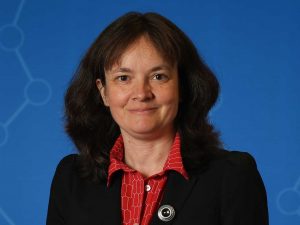
Egeblad has focused on the way the immune system’s defenses can exacerbate cancer and other diseases. Specifically, she studies the way a type of white blood cell produces an abundance of neutrophil extracellular traps or NETs that can break down diseased and healthy cells indiscriminately. She thought potentially high concentrations of these NETs could have been playing a role in the worst cases of COVID.
“We got the idea that NETs were involved in COVID-19 from the early reports from China and Italy” that described how the sickest patients had severe lung damage, clotting events and damage to their kidneys, which was what she’d expect from overactive NETs, Egeblad explained in an email.
Recently, she, her post doctoral researcher Jose M. Adrover and collaborators at Weill Cornell Medical College and the Icahn School of Medicine at Mt. Sinai proved that this hypothesis had merit. They showed in hamsters infected with COVID and in mice with acute lung injuries that disabling these NETs improved the health of these rodents, which strongly suggested that NETs are playing a role in COVID-19.
“It was very exciting to go from forming a hypothesis to showing it was correct in the context of a complete new disease and within a relatively short time period,” Egeblad wrote.
Egeblad, Andover and their collaborators recently published their work in the Journal of Clinical Investigation Insight.
Importantly, reducing the NETs did not alter how much virus was in the lungs of the hamsters, which suggests that reducing NETs didn’t weaken the immune system’s response to the virus.
Additional experiments would be necessary to prove this is true for people battling the worst symptoms of COVID-19, Egeblad added.
While the research is in the early stages, it advances the understanding of the importance of NETs and offers a potential approach to treating COVID-19.
An unexpected direction

When Adrover arrived from Spain, where he had earned his PhD from the Universidad Complutense de Madrid and had conducted research as a post doctoral fellow at the Spanish Center for Cardiovascular Research in March of 2020, he expected to do immune-related cancer research.
Within weeks, however, the world changed. Like other researchers at CSHL and around the world, Egeblad and Adrover redirected their efforts towards combating COVID.
Egeblad and Andover “were thinking about the virus and what was going on and we thought about trying to do something,” Adrover said.
Egeblad and Adrover weren’t trying to fight the virus but rather the danger from overactive NETs in the immune system.
Finding an approved drug
Even though they were searching for a way to calm an immune system responding to a new threat, Egeblad and Adrover hoped to find a drug that was already approved.
After all, the process of developing a drug, testing its safety, and getting Food and Drug Administration approval is costly and time-consuming.
That’s where Juliane Daßler-Plenker, also a postdoctoral fellow in Egeblad’s lab, came in. Daßler-Plenker conducted a literature search and found disulfiram, a drug approved in the 1950’s to treat alcohol use disorder. Specifically, she found a preprint reporting that disulfuram can target a key molecule in macrophages, which are another immune cell. Since the researchers knew this was important for the formation of NETs, Daßler-Plenker proposed that the lab test it.
Working with Weill Cornell Medical College and the Icahn School of Medicine at Mt. Sinai, Adrover explored the effect of disulfiram, among several other possible treatments, on NET production.
Using purified neutrophils from mice and from humans, Adrover discovered that disulfiram was the most effective treatment to block the formation of NETs.
He, Assistant Professor Robert Schwartz’s staff at Weill Cornell and Professor Benjamin tenOever at Mt. Sinai tried disulfiram on hamsters infected with SARS-Cov-2. The drug blocked net production and reduced lung injury.
The two experiments were “useful in my opinion as it strengthens our results, since we blocked NETs and injury in two independent models, one of infection and the other of sterile injury,” Adrover said. “Disulfuram worked in both models.”
More work needed
While encouraged by the results, Egeblad cautioned that this work started before the availability of vaccines. The lab is currently investigating how neutrophils in vaccinated people respond to COVID-19.
Still, this research offered potential promise for additional work on NETs with some COVID patients and with people whose battles with other diseases could involve some of the same immune-triggered damage.
“Beyond COVID, we are thinking about whether it would be possible to use disulfiram for acute respiratory distress syndrome,” Egeblad said. She thinks the research community has focused more attention on NETs.
“A lot more clinicians are aware of NETs and NETs’ role in diseases, COVID-19 and beyond,” she said. Researchers have developed an “appreciation that they are an important part of the immune response and inflammatory response.”
While researchers currently have methods to test the concentration of NETs in the blood, these tests are not standardized yet for routine clinical use. Egeblad is “sensing that there is more interest in figuring out how and when to target NETs” among companies hoping to discover treatments for COVID and other diseases.
The CSHL researcher said the initial race to gather information has proven that NETs are a potentially important target. Down the road, additional research will address a wide range of questions, including what causes some patients to develop different levels of NETs in response to infections.






